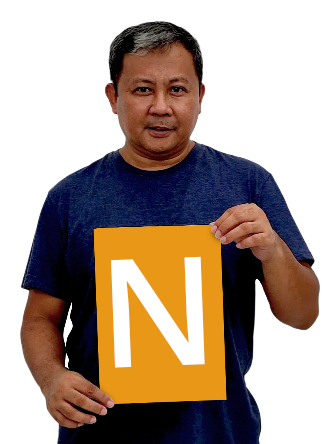4 Signs You Are Looking for a Bad Hire

Distant assistants with stellar performance are an asset to any business. They match the business’s ideals, provide quality results, and help bring a positive impact to the community. So, it’s critical to source and hire the right person for the job.
Sourcing requires time and patience, but taking a guided approach can lead you to qualified candidates. Here are 4 tell-tale signs that you are going the opposite and expensive way around.
1. Rushing the Process
How do you look for distant assistants to hire? How long does it take you to decide that you have found the right match?
Many business owners and hiring managers skimp through recruitment. They commit the mistake of hiring people based on an urgent need to fill in a given position. As survey indicates, many underestimate the complexity of it all.
Stress levels increase for both management and staff as a consequence. The cost of a bad hire is higher than expected, affecting the business’s overall performance.
Finding replacement is no quick fix. It may require going through the hiring process again.
According to the Society for Human Resource Management (SHRM), it takes 36 days to fill in a given position and an average cost-per-hire of $4,425.
2. Setting Unclear Expectations
What competencies are you looking for in a candidate? Is your job description well-defined to attract quality candidates?
Over the years, technology has changed the way people scout for talent. From career platforms to social media hubs, they have adopted new trends in gathering necessary data to evaluate and to stay connected with potential hires.
Still, these technological advancements do not guarantee the process to be any less complicated. An SME survey, for instance, revealed 35% of its participants who experienced hiring candidates with fake credentials.
Meanwhile, over 40% indicated they hired someone who lacked the qualifications.
Finding qualified talent is like finding a needle in a haystack. According to Glassdoor, it takes an average of 28.1 days before an open position receives an applicant.
Knowing the skills to hire and specifying them in your job posting definitely play a big advantage. Having a good understanding of the job role also helps in filtering the results.
3. Asking the Wrong Questions
Are your questions relevant to the position being applied for? What objectives do you want to achieve by asking them?
Job interviews are good opportunities to know more about the aspiring applicant. It helps you to create well-informed decisions on their personality, skills, and level of emotional intelligence, among others.
Example questions to ask:
- Tell us something about yourself.
- Why should we hire you for this position?
- What do other people say is your greatest strength?
- Can you tell of one story when you had to overcome a challenge in your workplace?
- How did you arrive at this area of specialization?
- Where do you see yourself in three to five years?
- What questions do you have for us?
The key is to ask questions that will give you the answers you needed to hear — questions which may not be readily available in their CVs and will indicate whether they are suitable for your business or not.
They may also be questions regarding their application credentials that you want to confirm for yourself.
The better the questions, the better the information you receive about the applicant.
4. Deciding Without Proper Evaluation
What characteristics should the candidates possess to make them eligible for the position? What steps should you take in the process?
According to SHRM, “A poorly designed recruitment process can miss attractive job candidates — including those who work for competitors — because they never find out that a position is open.”
The best way to avoid hiring misfits is by implementing actionable steps that will guide you to the right person. An example is our 6-Step Hiring Formula.
These steps include:
- Learning about the tasks you can delegate.
- Defining the responsibilities inclusive of the job role.
- Getting a consultation and setting up strategies.
- Understanding what to expect during interviews.
- Reviewing and signing the agreement with your distant assistant.
- Onboarding your newly hired distant assistant.
The formula, or any other evaluation guideline for that matter, seek to address the major challenges or needs of your business.
It considers the application requirements for the intended job role. These requirements enable a fair and structured hiring process.
A good CV is only one of its aspects. Interviews and personality tests, among others, help narrow down your results.
Staring at the Bad Apple
How do you know if you are about to make a bad hiring decision? Even in interviews, candidates with high potential for success as reflected in their CVs can disappoint you.
Survey shows that 81% of owners and managers said they made a bad hire. Nearly 60% of them realized the mistake in a few weeks’ time, yet they are slow to address the possibilities of a replacement.
Typical responses of companies when they are met with a bad hire:
- Meet with the team member and provide constructive feedback
- Develop training programs in hopes of improving the performance of the team member
- Giving the team member time to adjust to the workplace environment and improve
- Informing the team member of the situation and fire quickly
Running a business already includes a sizeable amount of investment, and letting someone go carries additional expense.
Poor performance not only affects the goals associated with the job role but also places a negative impact on the team and on the business as a whole.
What if you are about to hire someone but something does not seem right? Should you let go or should you hold on?
Claudio Fernández-Aráoz, a talent expert, said, “People who fail in a new job mostly do so because of their inability to develop proper relationships not only with their boss but also with their peers and subordinates.”
A bad hire is always costly. The price is high for every person and the
Our team at Bottleneck Distant Assistants is open to inquiries about distant assistants. Schedule a free consultation today! Let us know what you think about the post 4 Signs You Are Looking for a Bad Hire in the comments below. We would love to hear from you!
About Jaime Jay
Meet Jaime Jay – a man who wears many hats, and wears them all admirably. He's a master connector, an entrepreneur extraordinaire, and a published author who knows how to get things done.
Before he found his way to the business world, Jaime served his country as a brave paratrooper in the U.S. Army. But that's just the beginning of his many accomplishments.
He's the founder of the renowned Bottleneck Distant Assistant Services firm, and his book "Quit Repeating Yourself" has become a must-read for entrepreneurs everywhere.
When he's not busy building his empire, you can find him on his beloved Harley Davidson, cruising through the countryside and taking in the invigorating effects of Uitwaaien – a Dutch practice that involves facing the wind to boost health and relieve stress.
He enjoys spending his free time outside building stuff with his wife, Nikita the dog and their two kittens (for now at least) Tommy and Tater.
He is ‘over-the-moon’ happily married to his wonderful wife Sara, his amazing daughter, Jessica, who is serving our country as a United States Army soldier. Jaime and Sara are the proud grand parents of two beautiful little girls.

Get Your Book Now!
Quit Repeating Yourself provides guidance for entrepreneurs, business leaders, and managers to help prevent unknown challenges from ruining their business.


















